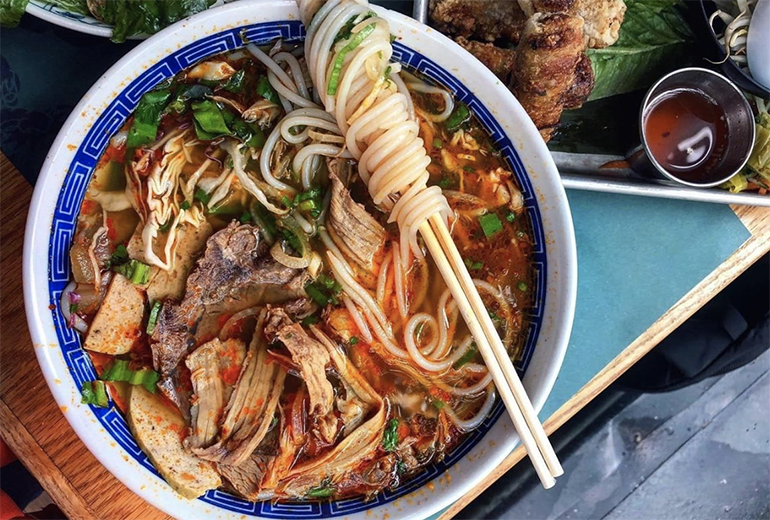1 5
1 5
Vietnamese cuisine will go beyond the banh mi. Look for street food stars like bún bò huê, a soup made with vermicelli and beef, and “egg coffee,” a drink that includes egg yolks and condensed milk for a delicious creamy flavor.
Mood food: Food psychologist Charles Spence has coined the phrase “gastrophysics” to capture the idea that food can impact how we feel. Restaurants will develop mood-boosting menus.
Edible packaging: The hate of single-use plastics will continue, and adventure-seeking guests will be intrigued by containers they can eat, such as Glenlivet’s recent whisky pods made from seaweed.
At a recent Les Dames d’Escoffier New York event, keynote speaker Jessica Harris, a culinary historian, predicted we will see more “new foods from unknown and untapped, or unheralded cultures.”
Examples included fonio, the gluten-free grain from Senegal, ahi peppers from Peru and new rice varieties and greens.
Harris also expects to see more foods from Eastern Africa, including Kenya, and Caribbean food “going beyond jerk, rice and peas,” such as callaloo and pepperpot stew.
Fermentation: “Fermentation and this obsession with feeding the microbiome continues to be a hot trend — thing slike fire cider, kombucha, pickled and fermented food. It has even become a very DIY thing, which is another reason why it is being demystified,” said Elliott Prag, lead-chef, Healthy Supportive Culinary Arts.
Elixirs: “Kefir water, shrubs, kombucha, plant-infused waters or alcohols are all very trendy. Kavass is also very popular. It’s a beet drink that is good to detox your liver,” said Missy Smith Chapman, chef-instructor, Health Supportive Culinary Arts
The “It” antioxidant is Black Seed: Sometimes called Black Cumin or Black Caraway, the Nigella Sativa was believed to be a life-extending secret of the pharaohs. Sales of black seed oil increased more than 200 percent between 2016 and 2017, according to the American Botanical Council. Expect to see whole seeds show up in spice blends and baked goods, and the oil will appear in dressings, sauces and soups.
Peas will prevail: Full of phytonutrients, protein and Omega 3s, peas are taking over the plant-based world. Grand View Research said global pea protein sales were about $73 million in 2016 and that’s forecasted to quadruple by 2025. Look for them in plant-based burgers and “meats,” gravy options and waffles.

